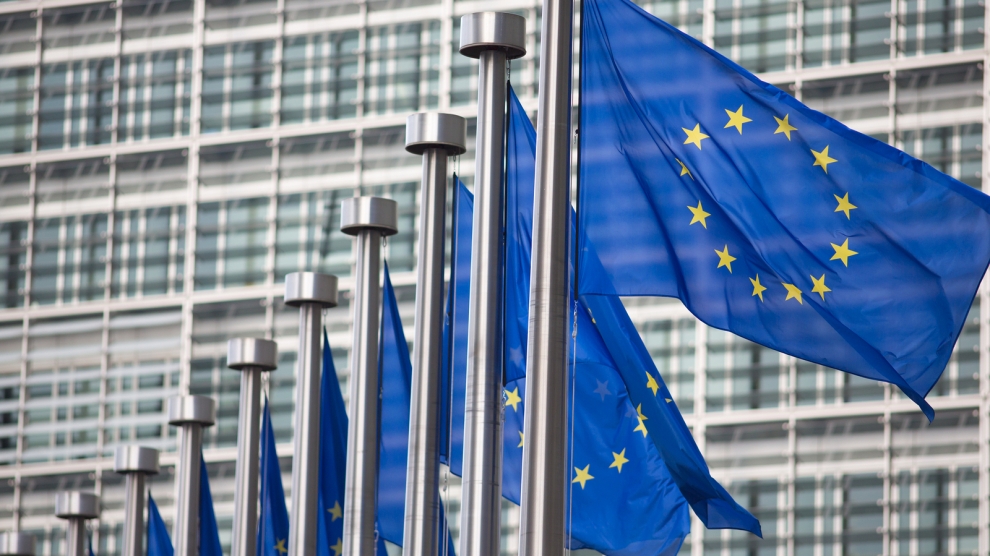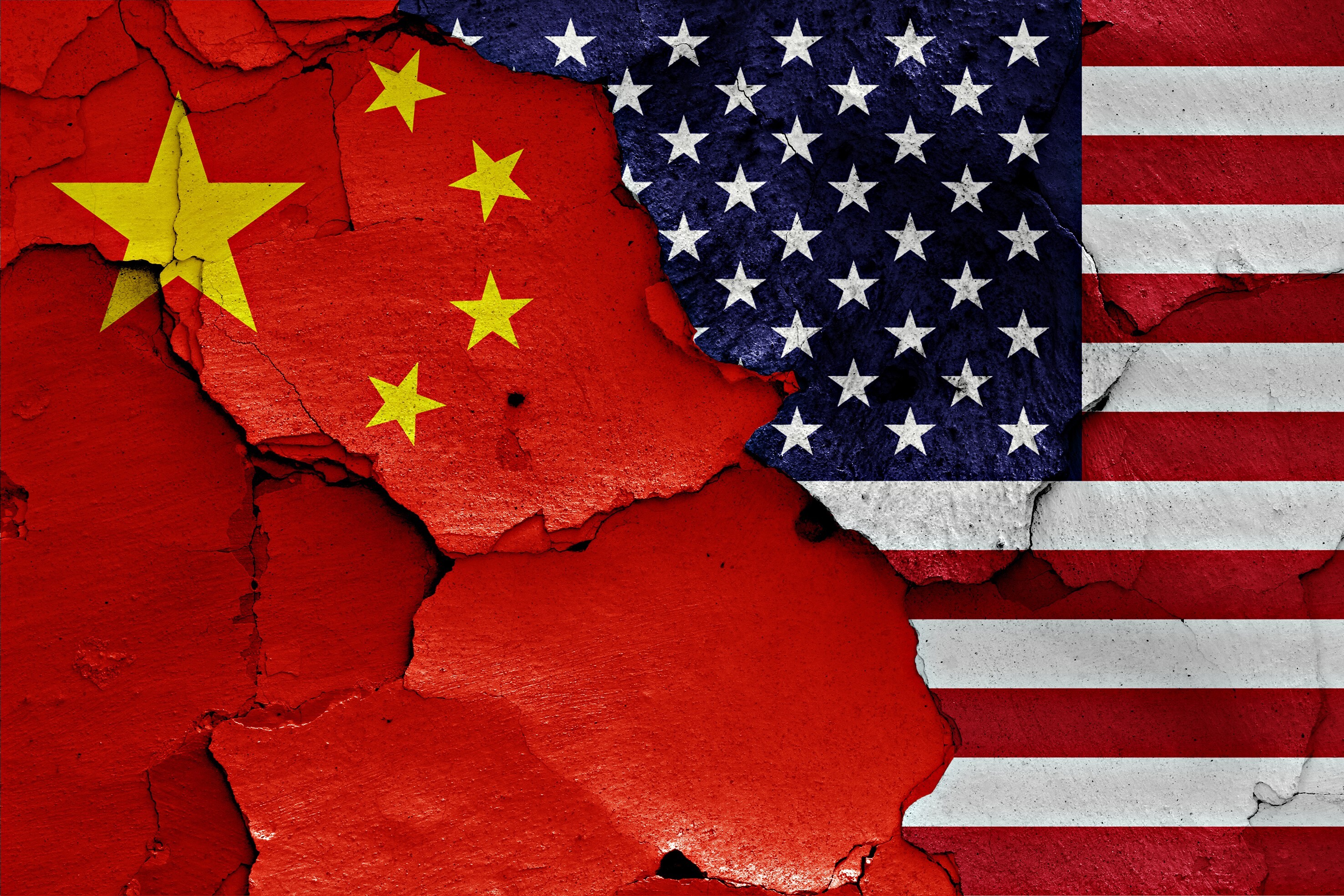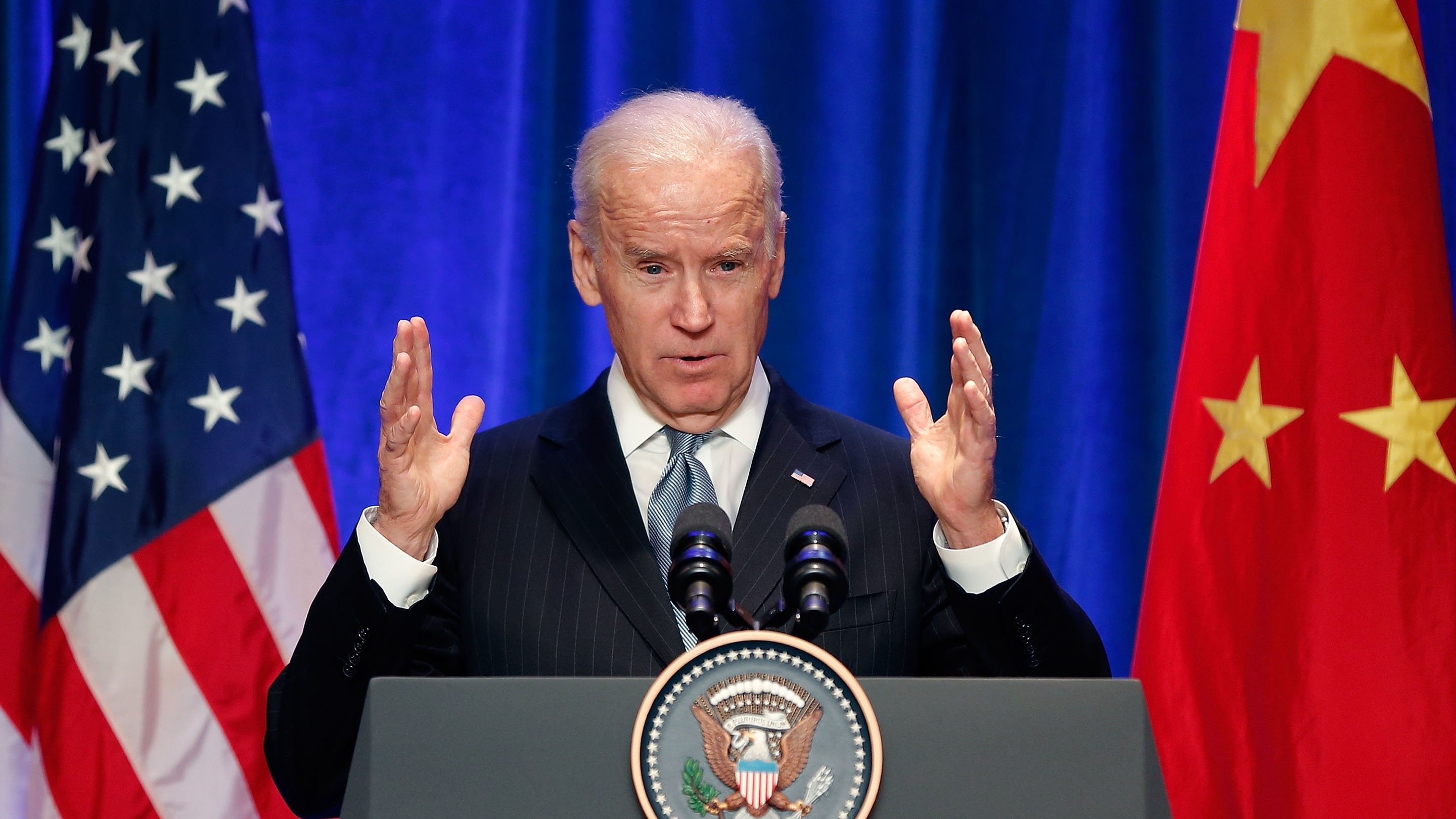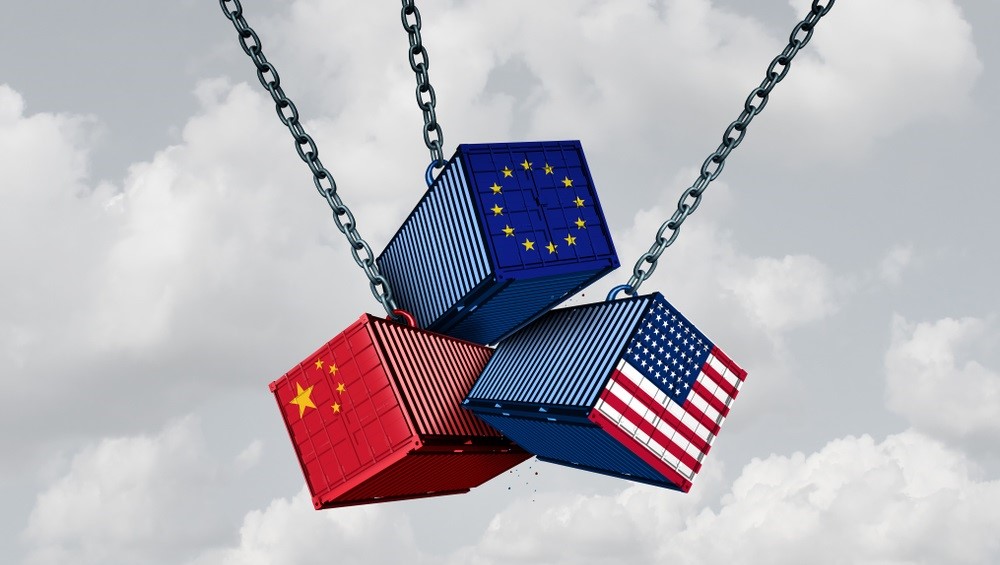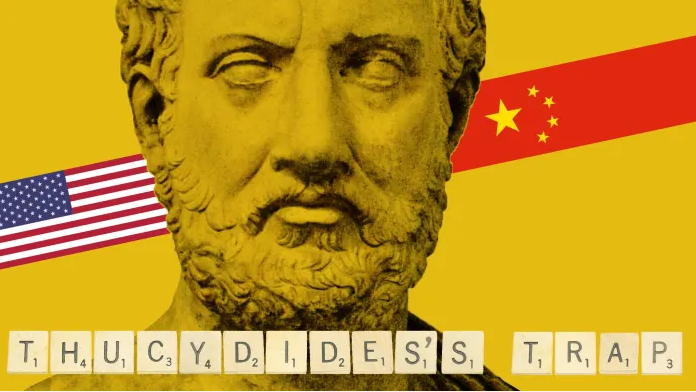Mapping Europe’s Digital Sovereignty Strategy: The EU-China-U.S. Triangle
March 29, 2021
About the author:
Thorsten Jelinek, Senior Fellow of Taihe Institute and Director of Taihe Institute European Center.
(Source: EU Political Report)
Recently, the European Commission - the executive arm of the European Union - has released not only its Digital Services Act package to regulate U.S. Big Tech, but also put forward a strategic vision on restoring cooperation with the United States, which includes establishing an EU-U.S. trade and technology council. The Commission also adopted a revised directive on the security of network and information systems (NIS II Directive), which will require individual companies that are deemed essential or important to address cybersecurity risks in supply chains and supplier relationships based on the EU 5G Toolbox. Drawing on Germany’s “supply chain act” and France’s “law on duty of vigilance of parent and outsourcing companies,” the Commission is also expected to unveil a draft of a due diligence mechanism against breaches of human rights and environmental standards.
These policies are parts of a larger legislative framework through which the European Union seeks to achieve “digital sovereignty,” which in turn would allow the EU to regain control over economic, technological developments and decisions and ensure a digital transition that is sustainable, inclusive and based on European values. In addition to this regulatory and social values-driven approach, the EU also follows an industrial policy agenda and a comprehensive research and innovation program to accelerate the digitalization and intelligent automation of Europe’s core industries in order to overcome its digital competitiveness gap with the U.S. and China. In short, regulations, social values and an industrial data economy should compensate for EU’s lack of Big Tech and turn the EU into a global norm-setter for a secure and trusted cyberspace. The European Commission’s “Digital Decade” strategy, which was updated in March 2021, outlines those targets.
As technology has become a geopolitical and strategic force, this paper discusses not only the EU’s approach toward its digital transition, driven by industry and technology policies, social values, and regulations, but also the foreign political context of Europe’s digital sovereignty strategy, including the U.S.’ China strategy and the respective foreign political priorities of the U.S.-EU relationship. The EU and the U.S., under the Biden Administration, clearly seek to restore the fractured transatlantic relationship. While the Trump Administration perceived the EU’s digital legislations as protectionist, the Biden Administration still needs to develop its own strategy towards U.S. Big Tech and the European approach, respectively, which will impact both the new mutual will to restore the transatlantic relationship and a potentially joint strategy regarding China. Yet the language used by both sides in their policy reports and legislations related to China still differs, highlighting Europe’s third way approach and quest for strategic autonomy. Although the Biden Administration wants to undo former President Trump’s politics and policies, it continues to use a rhetoric of containment and rivalry concerning China. This becomes evident especially in the work of the Cybersecurity Solarium Commission, the 2021 National Defense Authorization Act, the newly established Department of Defense Task Force on China, and the proposed “Democracy Technology Partnership Act.” China is on the path to becoming the leading country in the world, but for President Joe Biden “that’s not going to happen on [his] watch.” For him, it’s a race between “autocracy” and “democracy.”
It remains to be seen to what extent a whole-of-government approach towards China will remain rhetoric and be used as a bargaining chip when negotiating with Beijing. Compared to the Biden Administration’s foreign policy strategy, the anticipated EU’s Indo-Pacific strategy is expected to be more neutral and emphasize that the region must remain not only free and open, but also multipolar. While the EU doesn’t share the U.S.’ hegemonic ambition and rather focuses on its immediate neighbors, the EU still caters to the U.S.’ new pivot to Asia. Against this geopolitical backdrop, digital sovereignty will certainly perpetuate technology decoupling and the division of the digital world into a Western and Chinese sphere. Digital sovereignty is not only a matter of promoting a data economy and preventing data market failures, but also one of ideological and system competitions.
Bridging the Digital Competitiveness Gap
(Source: KNOLSKAPE)
The legislators of the European Union are aware that Europe is lagging behind the United States and China in terms of digital competitiveness. With the exception of SAP, Europe has no significant digital champions - like U.S.’ GAFAM (Google, Amazon, Facebook, Apple and Microsoft) or China’s BAT 2.0 (Baidu, Alibaba, Tencent and ByteDance) and the fast-growing TMD (Toutiao, Meituan-Dianping, Didi Chuxing) - that generates mass data and trains algorithms, both of which are driving competitiveness and the transition to an ubiquitous digital future.
While GAFAM dominates the EU’s digital consumer market, ecosystems, and B2B platforms, Asian (Samsung) and especially Chinese companies (Huawei and ZTE) supply Europe with hardware that is increasingly bundled with software, notably 5G network communications equipment and handsets. This makes Europe a net-importer of information and communications technology (ICT) products and services.
Hence, to catch up with the transition into a digital economy, Europe has embarked on a “third way” and sought to leverage its existing strength in operational technologies (i.e., industry 4.0, smart robots, 3D printing, and IoT), in order to harness elements of informational technologies (cloud computing, big data analytics, business management software and AI) as well as transactional technologies (e-commerce platforms and global networks).
While Europe has a competitive advantage in operational technologies, which are mainly supplied by Europe’s large industrial champions, the latter two technology areas are precisely those ones that are occupied by those digital champions that Europe is lacking. As part of its grand strategy, Europe therefore wants to expand the area of industrial, non-person-related data and IoT (smart data collections sensors) as well as of federated multi-cloud environments that have local data storage facilities (edge, fog, mist computing). Europe seeks further integration of its industry landscape, greater sharing of commercial data and a wider use of public data, as well as the development of B2B platforms within and across Europe’s competitive industries. Based on such industrial and public data sharing approach, the EU especially targets and seeks to enable Europe’s smaller businesses for the digital transition.
Europe’s new flagship research and innovation investment program, Europe Horizon, which allocates around €100 billion for research and development, lists in more detail the priority technology areas and projects that should help boost Europe’s competitiveness. Smart cyber-physical systems, new materials, bio-synthetics and exponential technologies, including 5G networks, distributed ledger technologies, AI, quantum computing, play a vital role not only for revamping Europe as global innovation hub, but also for realizing EU’s Green Deal and its pledge to become carbon-neutral by 2050. As part of Europe Horizon, the newly launched European Innovation Council (ECI) has a budget of €10 billion and aims to “identify and support breakthrough technologies and game changing innovations to create new markets and scale up internationally.” The transition propelling Europe’s Industry 4.0 is already in full swing, including Gaia-X, which increasingly becomes the EU’s forerunner projects for boosting an industry-driven data economy enabled through a federated data and digital infrastructure ecosystem.
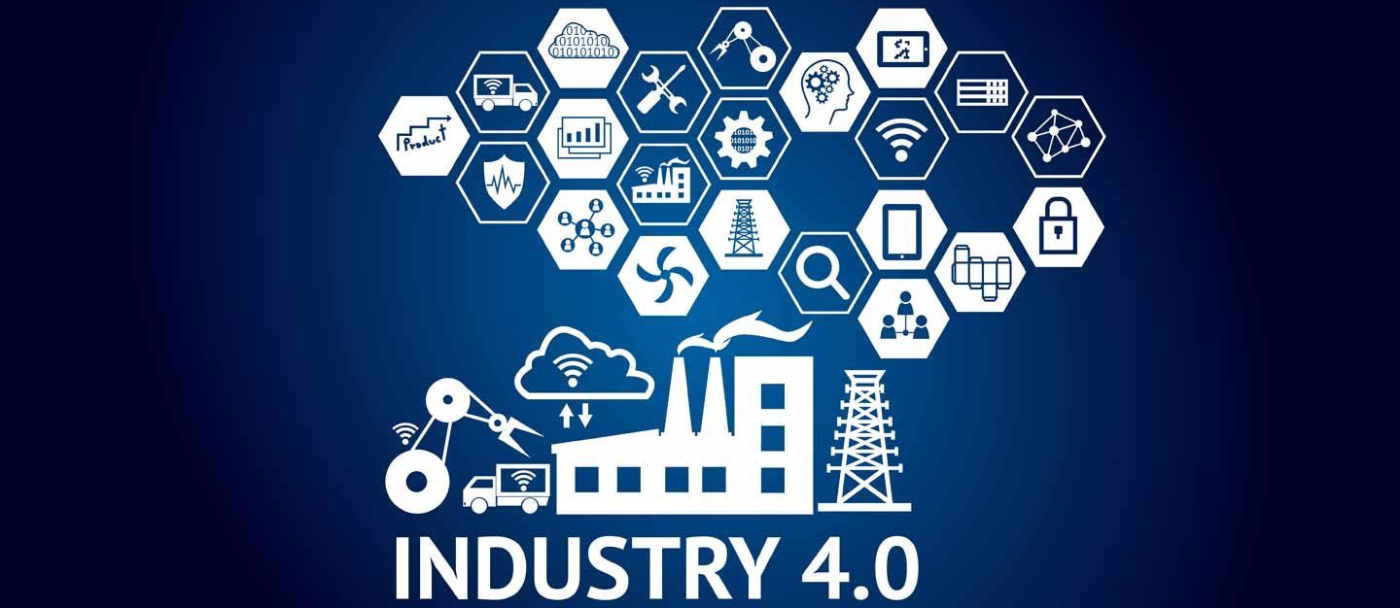
(Source: manufacturing engineering)
This industry policy agenda aims at compensating for Europe’s lack of home-grown, large-scale informational and transactional technologies and at creating and diffusing digital infrastructure and data ecosystems for Europe’s target industries, including manufacturing, energy, mobility, finance and health. However, it remains questionable whether Europe can achieve those ambitious goals without actively nurturing an environment that is conducive to the emergence of digital champions of informational and transactional technologies and whether Europe’s operational technologies can achieve comparable leverage in the future.
Despite the legitimate criticism that data economy companies have caused undesirable disruptions, market concentration, use choice limitation and gained disproportional socio-political influence, their platforms have created most of the new jobs and businesses over the past decade.
Given that Europe’s operational technologies are mainly provided by Europe’s large industrial champions, who would need to share their data for a wider industrial data economy to emerge, it remains uncertain whether the EU’s industry and technology policy agenda will achieve a comparable ecosystem spillover effects and thus help realize the EU’s quadruple objectives, including economic competitiveness, market inclusion, geographic convergence, and environmental sustainability.
Regarding Europe’s major competitors, the U.S. is weak in industry 4.0 due to the country’s previous outsourcing of its industrial base and continuous focus on software and services. In contrast, China is a competitor not only in the area of informational and transactional technologies (where both the U.S. and China are leading, and Europe is steps behind) but also in operational technologies.
Regarding the latter, China runs its own Industry 4.0 policy agenda, which started with its Internet Plus and Made-in-China 2025 programs. According to the new 2021-2023 action plan that was unveiled by the Ministry of Industry and Information Technology in February 2021, the Chinese government plans a high-tech transformation of China’s manufacturing industry with home-grown technologies to secure its competitive position in global supply chains. The 14th five-year plan (2021-2025) confirms and updates China’s digital ambition and self-reliance strategy.
A Social Values and Regulatory-Driven Approach
(Source: EMERGING EUROPE)
In addition to such interventionist industry and technology policy agenda - which is not always supported across the political spectrum, especially for free market advocates - the EU has also put a strong focus on social values and a regulatory approach to become the “most secure” and “trusted digital leader” as well as a “global norms setter.” Thus, to further differentiate from China and the United States, the EU promotes a digital transition that is thought to be inclusive and fair and one that safeguards an open, democratic and sustainable society and economy.
Such regulatory-driven, fundamental rights and security-based approach - which has been specified in various European Commission communications, guidelines, and white papers - has led to a series of new laws and regulations and the reform and alignment of existing ones to harness the opportunities of the digital transition while mitigating its risks.
Unlike the United States and China, the EU lacks governance centrality but has made significant progress in integrating and harmonizing digital policies across member states with the initial focus on creating a digital single market (DSM). With a combined population of 515 million people, a GDP of $20 trillion ($40,000 per capita), and 20% of global R&D spending, Europe is the largest single integrated market and remains an attractive destination for foreign investments. This explains why the establishment of a single physical and digital single market has always been at the forefront of the European project and legitimized by the EU Treaties and Charter thus transcending the sovereignty of the EU’s individual member states.
However, the increasing gap in digital competitiveness as well as the changing and intensifying landscape of immediate cybersecurity and privacy risks and longer-term structural imbalances caused through ubiquitous digitalization and intelligent automation, have rapidly legitimized the EU to expand and align its regulatory reach across all major EU policy domains, including cyber policies concerning fundamental rights, the internal market, home affairs, defense and foreign affairs. Traditionally, those policy areas have been parts of the jurisdiction of the individual member states.
Now, based on the Global Strategy (since 2016) and the Security Union (since 2020), including the Blueprint approach (which is a coordinated response to large-scale cybersecurity incidences), the EU has developed an integrated legal framework for the digital integrated market, personal data privacy, essential infrastructure and borders, society and democracy and international cooperation.
Since 2016, the European Commission has proposed and adopted a series of regulations, directives, and recommendations that address the different jurisdictional domains and challenges of the digital transition, including:
-The General Data Protection Regulation (GDPR, adopted 2018)
-Networks and Information Security Directive (NIS, adopted 2018)
-Cybersecurity Act (adopted 2019)
-Data Governance Act (DGA, proposed 11-2020)
-Digital Services Act (DSA, proposed 12-2020)
-Digital Market Act (DMA, proposed 12-2021)
-ePrivacy Regulation (ePR, updated draft 01-2021)
-Networks and Information Security II Directive (NIS II, proposed 01-2021)
-AI legislation for high-risk applications (expected for 2021)
With the EU-wide adoption of the Cybersecurity Act in 2019, the EU’s cybersecurity agency (ENISA) has become a permanent EU agency vested with more authority to enact EU’s cybersecurity legislations. ENISA is responsible for the development of a standardization, certification, and assessment framework that is applied to ICT products, services, and processes for essential and important infrastructure. The initial focus has been on 5G infrastructure and IoT. ENISA also supports capacity-building and policy development; handling of cybersecurity incidents; and the general implementation of the NIS Directive.
Those legislations impose European values and a cyber risk-based approach on digital products and services. Concerning China, on a technological level, those EU legislations don’t mean an outright ban of Chinese ICT products. However, they leave a “political backdoor” that could still lead to a ban, as has already happened on member state level, including the UK. Such political backdoor can be found, for example, in Germany’s “Draft Bill on IT Security 2.0.” The exclusion of an equipment provider, like Huawei, must be decided unanimously by four ministries (economy, interior, foreign affairs, federal chancellery) and their respective departments for IT security.
Digital Services Act Package
(Source: Crowell & Moring )
The loose concept of “digital sovereignty” summarizes EU’s comprehensive industry and technology policy agenda and regulatory-driven approach in the direction of digital transition. For the EU, digital sovereignty means to establish, safeguard and increase trust in the digital single market, set its own rules, make autonomous economic and technology choices, develop and deploy strategic digital capacities and infrastructure, and protect EU borders and liberal democratic values. The Data Services Act Package, which includes the Data Services Act (DSA) and Digital Market Act (DMA) and was adopted by the European Commission in December 2020, is an important legal component of Europe’s digital sovereignty. However, the Data Services Act Package has also sparked controversy.
For the European Commission, the Digital Services Act Package is the first step to “rewriting the rulebook” for the digital internal marketplace and creating a “single set of rules for all digital businesses operating in Europe.” The DSA is seen as the single largest piece of reform of online activity to increase trust and safety online and runs in parallel with the DMA and Data Governance Act. Its main objective is to reform the outdated e-Commerce Directive dated 2000 and clarify the responsibilities and liabilities of digital services regarding illegal and harmful content. In comparison, the DMA will directly address the economic power of large online platforms (LOPs) and aim at opening the digital market for smaller firms by establishing limits to LOPs. For the European Commission the LOPs cause three challenges:
-unfair practices vis-à-vis business users and competitors,
-structural competition distortion, and
-fragmented and ineffective institutional oversight and enforcement.
In comparison, the Data Governance Act (DGA) aims at providing a legal framework to strengthen and increase the trust in sharing mechanisms of non-person related data across the EU and with non-EU countries therefore complementing the GDPR, which addresses the protection of person-related data. Besides, when it comes to the combination of personal and non-personal related data, the GDPR retains the upper hand and applies to mixed data sets.
It’s clear that the DMA, DSA, and DGA directly target and will have a transformative impact on U.S. Big Tech. The Trump administration perceived those legislative proposals, including considerations of a digital tax, as protectionist and threatened the EU with countermeasures should they become implemented. Paradoxically, the GAFAM companies have also face critical public and legal scrutiny in the U.S. concerning antitrust violations, counterfeiting, and worker’s activism.
A similar development can also be observed in China as the Chinese government has intensified its “work against monopolies” and started taking a tougher stance on China’s data champions, like Alibaba, Tencent and their peers. In 2020 and 2021, the reform and adaptation of China’s cybersecurity law from 2017 has gained momentum in China. This includes new and adjusted laws concerning the digital economy, consumer protection, information control, national security, technology self-sufficiency, and international cyber governance. China’s cybersecurity framework incorporates the multi-level protection scheme (MLPS 2.0), provisions concerning the security of critical information infrastructure operators (CIIO), personal information protection, data localization and cross-border data transfer as well as network product and encryption.
Hence, each economic bloc tries to deal with the challenges of Big Tech and the disruptions caused by the transition to a digital economy. While governments deal with a series of global challenges within their respective jurisdictions and based on domestic political priorities, outside their borders, such sovereign-digital approach can easily turn into or be received as market protectionism. For those countries that are leaders in digital technologies, the openness of foreign markets is very desirable. For those countries, who are still catching up, open markets can lead to prosperity, but also undermine sovereignty and the emergence of indigenous technologies. Such fundamental tension applies to the U.S.-EU-China relations.
(Source: PTC)
In Europe, supporters of open markets - who argue that Brexit and therefore the new dominance of Germany and France in the EU are the main reason behind such regulatory-driven approach - see those legislative proposals as ill-suited for addressing issues of platform and ecosystem dominance. For them, those digital legislations are mainly motivated by geopolitical and protectionist anxieties rather than technology and market considerations. Europe’s digitalization strategy is risk-mitigation-driven and merely makes a virtue of necessity (i.e., the lack of digital champions) rather than tackling the root-causes of Europe’s competitiveness gap. Free market proponents argue that there is little systematic analysis of the impact of those regulations concerning whether they will boost or stifle innovation, achieve a level playing field or burden smaller businesses, create or prevent the creation of new jobs, and whether they increase the welfare of societies and sufficiently enable the Green transition.
This also poses a question of whether businesses should be regulated based on their country of origin, or primarily on the business models which drives their incentives and decisions. The Digital Services Act Package and the Data Governance Act, which are regulations that will become directly applicable in all member states, will be further debated in both the European Parliament and European Council and their final adoption is not expected before 2023. In the meantime, legal texts can still change considerably as the EU will continue to balance between ensuring fundamental rights, strengthening democratic institutions, responding to global competition and the emerging collaboration with the Biden administration and its own relationship with U.S. Big Tech. The Biden administration shares some of Europe’s concerns regarding U.S. Big Tech, but it also needs its Big Tech to pursue the broader goal of renewing America’s competitiveness especially against China.
The European way of coordinating the digital transition, which has been updated by the “2030 Digital Targets” strategy and roadmap in March 2021, had already caused tension between the EU and U.S. as previously indicated. What added to that recent friction and thus highlighting Europe’s determination with implementing its digital strategy, has been the invalidation of the EU-U.S. Privacy Shield by the EU Court of Justice, i.e., the EU-U.S. data transfer agreement, which had already replaced the old Safe Harbour Privacy Principles. The latest court ruling complicates the transfer of data from the EU to the U.S. and could have a “ripple effect” for other third countries, like China, due to the violation of EU’s fundamental rights and privacy protection laws.
Leadership within the European Union perceives the processing and storage of data in China to be an even greater challenge to EU laws than the contested U.S. surveillance laws. However, for the EU, data transfer with China and China’s data champions is less of an immediate issue (although concerns regarding WeChat and TikTok have been raised), than currently the import of Chinese hardware equipment for next-generation mobile communication. The latter primarily relates to the geopolitically dominated discourse on 5G network equipment provided by the market leading companies Huawei and ZTE. While the EU 5G Toolbox and the NIS Directive (both of which will be further aligned with the proposed NIS II Directive) reveal the complexity of mitigating cybersecurity threats, a political bias remains towards supply chain risks and the trustworthiness of third countries.
While the NIS II Directive addresses the mitigation of cybersecurity risks associated to a strategic infrastructure, the European Commission is also preparing the draft text of the anticipated Supply Chain Act and thus a mechanism that would require companies to conduct supply chain due diligence about breaches against human rights and environmental standards. The future EU system of due diligence for supply chains is modeled after France’s “law on the duty of vigilance of parent and outsourcing companies” from 2017 and Germany’s “supply chain law” that will come into force in 2023.
Overall, while Europe’s concern about China mainly relates to cybersecurity risks and the violation of human rights, Europe’s concern about the U.S. primarily relates to data privacy protection and the functioning of democracy and the freedom of speech. Accordingly, EU cybersecurity and supply chain laws target China’s digital infrastructure champions, while the EU’s Digital Services Act package, like the GDPR before as well as the invalidation of the Privacy Shield, targets U.S. Big Tech. In addition to safeguarding Europe’s digital integrated market, those differences highlight the geopolitical and strategic dimensions of Europe’s digital sovereignty strategy, which is further addressed in the remainder of this text.
While the EU seeks to cooperate with both blocs, while naturally leaning towards the U.S. and increasingly adopting an anti-China rhetoric, the U.S. wants to cooperate with the EU to become an “Asian power” as it further positions itself to contain China. As a result, cyber technology has become militarized, which can be seen in major U.S. strategies, policy recommendations and bills that advocate a “whole-of-government” approach to China, that is a coordinated approach across U.S. ministries, public administrations, public agencies, military, and civilian organizations. While the EU doesn’t share the U.S.’ hegemonic ambition and rather wants to focus on its neighbors, the EU still caters to the U.S.’ new pivot to Asia.
Geopolitical Context & Opportunities for Collaboration
(Source: South China Morning Post)
The critique that EU’s digital agenda is dominated by geopolitics is legitimate, but this is simply because science and technology have become a strong, if not the strongest, geopolitical and strategic force in foreign policy and international relations. EU’s third-way digital agenda has to be seen against the backdrop of EU’s quest for “strategic autonomy” of “freedom of sovereignty.” A free market foundationalist proposition is naive or conveniently omits the dual role of technology.
Now, Europe’s freedom of sovereignty strategy assumes increasing independence from America and China. As stated in the European Parliament resolution on connectivity and EU-Asia relations, Europe wants to “become a competitive global actor on a par with the U.S. and China in digitalization.” While the U.S. uses its varied assets in the Pacific (i.e., Philippines, Guam, Saipan) to solidify its Asian foundation, the EU instead focuses on the protection of its own borders and that of its neighbors. The political demand for strategic autonomy is largely a reaction to Trumpism, the geopolitical and trade tension between the U.S. and China and a seemingly irreversible decoupling on the level of innovation, digital, trade and the macro-level system. As stated in a recent Rhodium Group report: “In both Washington and Beijing, political trust is at a nadir, and a return to the cooperative engagement policy that dominated the relationship since 1972 is difficult to imagine absent a sea change in both capitals.”
Being sandwiched between the two Thucydidean powers, however, the European Union seeks to reconfigure some forms of collaboration and cooperation with both sides. While the EU and China managed to reach a fragile political consensus on the Comprehensive Agreement on Investment (CAI) and still the majority of EU businesses are frustrated but do not intend to divest from China, the EU-U.S. relationship has started normalizing under the Biden Administration. The EU has strong economic interests to both sides and would unlikely surrender to one of them. The recent EU sanctions on China and China’s countermeasures have made the mutual adoption of CAI unlikely. China “urges the EU side to reflect on itself, face squarely the severity of its mistake and redress it. It must stop lecturing others on human rights and interfering in their internal affairs. It must end the hypocritical practice of double standards and stop going further down the wrong path.”
Regarding the EU-U.S. relationship, there is a clear political will to restore the Western alliance based on the rhetoric of common values, which has been signaled by Joe Biden’s proposed “Summit for Democracy” and the “New Transatlantic Agenda for Global Change” proposed by the EU. While the Summit for Democracy has not yet been specified further, it is still expected to take place in 2021. The EU’s New Transatlantic Agenda was publicly presented in December 2020, proposing shared Western principles and priorities that should be the basis for global change and restoring the EU-U.S. relationship. In particular, the EU proposes four specific areas of EU-U.S. collaboration, including:
-a globally coordinated response to the coronavirus pandemic,
-joint trade and climate initiative to achieve carbon neutrality by 2050,
-the establishment of an EU-U.S. trade and technology council, and
-promoting democracy and the re-establishment of a closer transatlantic partnership in different geopolitical arenas.
The latter two agenda items serve two purposes. The former is rather of interest to the EU, the latter is of interest to the Americans. The purpose of the proposed EU-U.S. Technology Council is to promote the EU’s values and norms in cyberspace and especially the Digital Services Act package to the Biden administration.
During the Special Munich Security Conference in 2021, both President Emmanuel Macron and the European Commission President Ursula von der Leyen re-emphasized the importance of this legislation and its objective to protect democracy and not to shield off Europe’s digital market. In contrast, the latter agenda item relates to the goal of counterbalancing especially China’s development and internationalization efforts.
(Source: Marketplace.org)
From the U.S. perspective, the Biden Administration wants to “dismantle Trump’s politics” but also continue the Trump Administration’s China containment strategy but based more on “familiar diplomacy and constructive negotiation.” However, it appears that the Biden Administration seeks to restore the Obama Administration’s attempted “Pivot to Asia” and has started employing China and Asia experts - who had already served under the Obama-Biden Administration. The Biden Administration also seeks to strengthen the Quadrilateral Security Dialogue (QUAD) between the U.S., Japan, Australia, and India. More specifically, the U.S. National Cyber Strategy (which is expected to be updated in 2021), the Cyberspace Solarium Commission (CSC) with its flagship 2020 report “A warning from tomorrow” and a series of related white papers; the National Defense Authorization Act for Fiscal Year 2021; as well as the new U.S. Department of Defense (DoD) Task Force on China (which has been established by Joe Biden in February 2021), clearly suggest an integrated government response towards China’s dominance through coordinated work across ministries, public administrations, public agencies, civilian organizations, and the U.S. military.
The Cyberspace Solarium Commission (CSC), who has been reauthorized by Congress in December 2020 to update its policy recommendations for 2021, strongly recommends the enhancement of U.S. competitiveness in the Indo-Pacific region to effectively compete against China. Following the high-level recommendations, the U.S. should seek to maintain its primacy in terms of:
-conventional military deterrence,
-enhance cybersecurity and strategic infrastructure protection,
-achieve advantages over security strategic technologies and standards (including in the area of 5G and 6G network technologies, yet with focus on software and open RAN),
-strengthen diplomacy with allies and partners,
-enhance economic leadership and make use of fiscal power,
-enhance public-private cooperation; reorganize the U.S. bureaucracy,
-develop new diplomatic, political, and cultural exchanges with partner countries, and
-cultivate skills and talents.
The U.S. Congress adopted 25 CSC recommendations for the 2021 National Defense Authorization Act.
The newly set up DoD Task Force on China, which might be more significant to the Biden Administration than the Cyberspace Solarium Commission, “will provide a baseline assessment of DoD policies, programs, and processes on China-related matters”. The Task Force will draw, at least, on two reports:
the DoD 2019 Indo-Pacific Strategy Report, which was developed under the Trump Administration, and
the congressional assessment that was carried out by the Center for a New American Security (CNAS) and mandated by the FY2019 National Defense Authorization Act: “Rising to the China Challenge - Renewing American Competitiveness in the Indo-Pacific.”
This 2020 assessment report “outlines a path for competition with China that will utilize all tools available to the United States” and recommends the U.S. government to “approach strategic competition with China as an urgent priority.” In terms of technology and international collaboration, the report clearly suggests to “prevent China's dominance of digital infrastructure in the Indo-Pacific” and that the “United States must compete with and for allies and partners.”
In terms of restoring the transatlantic alliance in respect to China, the EU also refers to the Indo-Pacific as a geopolitical substitute for Asia-Pacific. However, the EU’s own Indo-Pacific strategy, which is supposed to be released sometime in 2021, is expected to be more neutral and emphasize a region that needs to “remain free, open,” and “multipolar.” Unlike the U.S., the EU doesn’t seek or employ the discourse of containment.
This is largely due to Europe’s lack of power, the mutual economic dependency between Europe and China, and that China and Asia will continue to grow substantially in the future, which is crucial for Europe’s long-term economic sustainability. While the American side refocuses its approaches on Asia, Europe will increasingly take care of its own borders and (as stated) places as well as its immediate neighbors. The Group of Seven (G7) meeting in Cornwall in June 2021 might add further clarity concerning a U.S.-EU approach towards China. The UK might use the opportunity to push for the formal creation of the D10, (i.e., the group of the 10 leading democracies, including India, South Korea, and Australia in addition to the G7 members), in order to build a strong alliance against China.
However, such new grouping seems unlikely due to diverging interests amongst the G7 members. NATO declared to be ready to “re-energize” the transatlantic cooperation and counter “any attempt to divide” North America and Europe, which was echoed by President Biden who stated that the “United States was fully committed to the NATO.”
U.S.’ Remilitarization of Cyberspace
(Source: Data Center Knowledge)
Technology has become the most strategic and contested dimension of this triangular geopolitical tension. With the USD $740.5 billion National Defense Authorization Act of 2021 (NDAA 2021) that the U.S. Congress passed in December 2020, the U.S. government further militarizes technology that is strategic for defense, security, as well as domestic and foreign interests. Like the CSC and CNAS reports from 2020, the 2021 defense bill makes numerous references to China as “adversary” and provides the legal basis to ensure that no Chinese ICT products and services are used by the U.S. military or by U.S. military host countries.
The bill further targets Chinese businesses, academia, and cultural institutions that have relations to the Chinese government or military concerning defense-sensitive areas, including intellectual property, hardware, software, and circuit boards. The bill also mentions the tracking of improper technology transfer, intellectual property theft, or cyber or human espionage. The bill also legitimizes a stronger engagement in Africa as well as in Southeastern Europe, Afghanistan, India, and Taiwan, which inevitably will increase geopolitical tension between the U.S. and China. As the largest trade partner, Europe also increases its engagement in Africa.
In addition, the Trump Administration blacklisted 44 Chinese companies because of alleged ties with the Chinese military and unilaterally imposed trade-related sanctions against China’s technology companies. In addition, the Entity List of the Department of Commerce restricts American technology exports, re-exports and in-country transfers to more than 300 Chinese companies and entities globally. For now, the Biden Administration has adopted those measures, but it remains unclear to which extent those measures will be dropped or used as a bargaining chip when negotiating with China. Recent actions have been mixed. While the Biden Administration has “paused Trump’s WeChat and TikTok ban,” it has “imposed new 5G limits on some Huawei suppliers.”
A major source of legislative recommendations concerning the analysis and development of a strategic approach to “defending the U.S. in cyberspace” and “protecting U.S.’ technological advantages,” remains the Cyberspace Solarium Commission. CSC was set up by the Trump Administration in 2018 and will continue to inform the U.S. Congress in 2021. Already in March 2020, CSC proposed a “layered cyber defense” strategy with “offensive and defensive” aspects to efficiently: (1) shape behavior through international engagement and cooperation; (2) deny benefits to adversaries, and (3) impose cost to deter future malicious behavior. China, Russia, Iran and North Korea are identified as major adversaries. CSC derived 80 legislative recommendations that are organized into six thematic pillars, encompassing measures in the area of norms, military and non-military tools: (1) structural reform; (2) norms and non-military tools and technology standards; (3) national resilience; (4) reshape cyber ecosystem; (5) private sector collaboration, and (6) employ military instruments of national power. The above-mentioned NDAA 2021 has codified 25 of CSC’s recommendations into the law and includes another 50 cyber provisions.
The more recent, bipartisan “Democracy Technology Partnership Act,” which has been proposed under the Biden Administration in March 2021, confirms and complements above-mentioned regulations and laws that were proposed and adopted already under the Trump Administration. The goal is to create partnerships with the world’s major liberal democracies to compete against China and ensure that “key technologies, including 5G, artificial intelligence, quantum computing, hypersonics, biotechnology, space capabilities and autonomous vehicles” serve the advancement of the West. An “International Technology Partnership Office” – housed in the Department of State; endowed with a research fund of 5 billion USD and advised by a public-private board – should develop “strategies to provide alternatives to countries who are at risk of acquiring technologies from authoritarian regimes.” The objective is to exclude China in terms of a U.S.-led coordination of technology policies and standards bodies; adoption of shared and secure data ecosystems; resiliency of supply chains; policies related to export controls, investment screening, and technology transfer; cooperation between research universities, and businesses; and investments and co-financing in targeted countries that protect democratic values and create a clear contrast and alternative to China. In short, the goal is to enhance competitiveness through technology decoupling and containment.
Europe’s Fate to Balance Between the U.S. and China
(Source: Aspenia Online)
Against this backdrop and as part of the proposed transatlantic agenda, which is to restore the post-Trump Administration EU-U.S. relationship, the EU seeks to establish a new technology alliance, including the establishment of a “EU-U.S. Trade and Technology Council”. The EU’s goal is to create a dialogue with the U.S. on digital market and cybersecurity and privacy issues as sketched above. The former precisely seeks to address the responsibility of online platforms and Big Tech, including fair taxation, market distortions, and the WTO reform as well as existing bilateral trade issues. The latter is sought to address the development of a common approach to critical technology protection and a cooperation on regulation and standards. According to the EU, the critical technologies discussion should center around the improvement of 5G network security, a new cooperation on free data flow between both economic blocs, as well as an agreement on responsible AI. Such technology alliance would build on the exiting EU-U.S. Cyber Dialogue, further institutionalize those cybersecurity-related discussions, and specify previously identified areas of commonality that were originally informed by the EU’s Joint Communication on “Resilience, Deterrence and Defense.”
For now, it remains unclear to which extent Europe will support the Biden Administration’s China strategy, while remaining loyal to its own endeavor for strategic autonomy and digital sovereignty. It also remains unclear to which extent President Biden and his team around Antony Blinken, Lloyd Austin, Ely Ratner, Jake Sullivan, Kurt Campbell, Gina Raimondo - who all articulated their alienation from China in public - intend to enforce such comprehensive and coordinated strategy. Given the strategic foreign policy gap between the U.S. and Europe, the Biden Administration could become frustrated and impatient with the positioning of the EU, especially with France over its anti-Big Tech proposition and with Germany over its reliance on China’s economy and Russian gas.
The Biden Administration had asked the EU for closer coordination on China, but the EU push for the EU-China Comprehensive Agreement on Investment (CAI) might have made the reparation of the EU-U.S. relations a bit more difficult from the outset. U.S. China-hawks call CAI an “ill-advised investment agreement.” However, there is also a growing opposition among the EU legislators who strongly oppose CAI. It also remains unclear how the Biden Administration will finally react to the EU’s anti-U.S. Big Tech regulations. Certainly, the days when President Obama stoked strong connections with U.S. Big Tech will not simply return to the White House under President Biden.
The world witnesses the beginning of a new Cold War. Systemic, strategic, economic, and technological competition as well as domestic policy priorities have already created a path dependency from which neither side can simply depart, and which has already caused a “prisoner’s dilemma” where any concession is seen as a disadvantage.
(Source: Financial Times)
China’s path is determined by its own political system, which is incompatible with that of the West, and its long-term oriented domestic and foreign-policy programs. China, which itself differentiates and is differentiated from the Western civilization, has become more fiercely blamed for the crisis in the West and undermining Western values. China certainly risks repeating the ills and unsustainability of Western modernization and capitalism. China has benefited from the U.S.-dominated global order. The main difference between China and the West is that China never surrendered to liberalism and now appears as the more effective system in managing capitalism and the pandemic. While China’s particularism accelerates the erosion of the existing global order, the crisis in the West is largely a result of the West’s own contradictions. The liberal democracies are turning against the liberal order. The “End of History” and “The Golden Years” were short lived. Today, “techno-feudalism” is replacing capitalism. Big Tech does not simply monopolize, but own entire markets. The financial system is bailed out once again but continues mainly to serve itself instead of serving society and the real economy. Stimulus packages are astronomical but won’t sufficiently reach those in need. While stock markets flourish again, wealth inequality and unemployment have reached historical highs in the West. A deep fragmentation of political identities as well as a hysterical, social media-dominated public sphere further divides and incites society and breeds an atmosphere of Sinophobia.
Under the Trump Administration, foreign policy had shifted the balance of foreign relations from cooperation-competition to competition-confrontation. The Biden Administration might seek ways of restoring cooperation again, while continue assuming, like Europe, a superior moral standpoint based on which both blocs will judge about China. Some have argued, in order to justify such revival of Western moralism, that Asia could experience the same destructive fate with China what the old Europe experienced with the rise of its previous powers in the 19th and 20th Century. There is a growing conviction that China must be contained in order to prevent China from “miscalculations” and “exploiting” America’s crisis. China requires the “same disciplined approach it applied to the defeat of the Soviet Union.”
Such Western historicism only works when China is reduced to the Western categories of “state capitalism” and “authoritarianism,” thereby ignoring China’s history and culture. Rapprochement and the willingness to understand China’s otherness has become suppressed in the Western discourse. While both sides could agree on a set of universal values, China would yet disagree with the Western assumption of the existence of a universal path towards the realization of those values. America’s universalism clashes with China’s particularism. For President Xi, like for his predecessors, the continuation of a strong Communist Party is what guarantees the survival and development of China. For the West, the Communist Party cannot be trusted and doesn’t fit into a Western, rules-based, open and democratic order. The Western order doesn’t leave space for a civilization state. During the first face-to-face meeting between top American and Chinese diplomats since President Biden took office in January, the Chinese side made clear that the U.S. had no qualification to lecture China from a position of strength and universality.
Facing such deadlock, technology has become the primary means of asserting military power and political identity. Europe and the U.S. nevertheless know that China will continue rising and that there is no return to the previous asymmetrical relationship, and that today’s global challenges can only be dealt with on a global level. Nevertheless, the most likely areas for a trilateral collaboration are climate change, the COVID-19 pandemic, and the Iran nuclear issue. In the meantime, however, technology will remain a fiercely contested domain, and the quest for technological primacy and systemic survival might well undermine such trilateral collaboration, which is already happening. The Sino-American Cold War triggers a process of deglobalization and economic Balkanization and brings the world dangerously close to a never-ending, cyber-enabled, and more difficult to control pre-war scenario between China and the United States, where both sides are pushing towards the Thucydides Trap. The U.S. accuses China of carrying out cyber-attacks. Conversely put, “considering the ability to launch cyber-attacks or the technologies that could be deployed, the United States is the champion in this regard.”
Europe most strongly depends on a functioning multilateral order, so it is Europe’s fate to balance between the two Thucydidean powers and act as a mediator. Such strategic objective should also guide Europe’s digital sovereignty and autonomy strategy. President Biden has little time to forge unity at home and with U.S. allies and partners to implement its China strategy. Fighting the pandemic and economic recovery will dominate his agenda. The “ghost of populism” remains democracy’s biggest enemy and might soon resurrect again.
—————————————————————
ON TIMES WE FOCUS.
Should you have any questions, please contact us at public@taiheglobal.org



